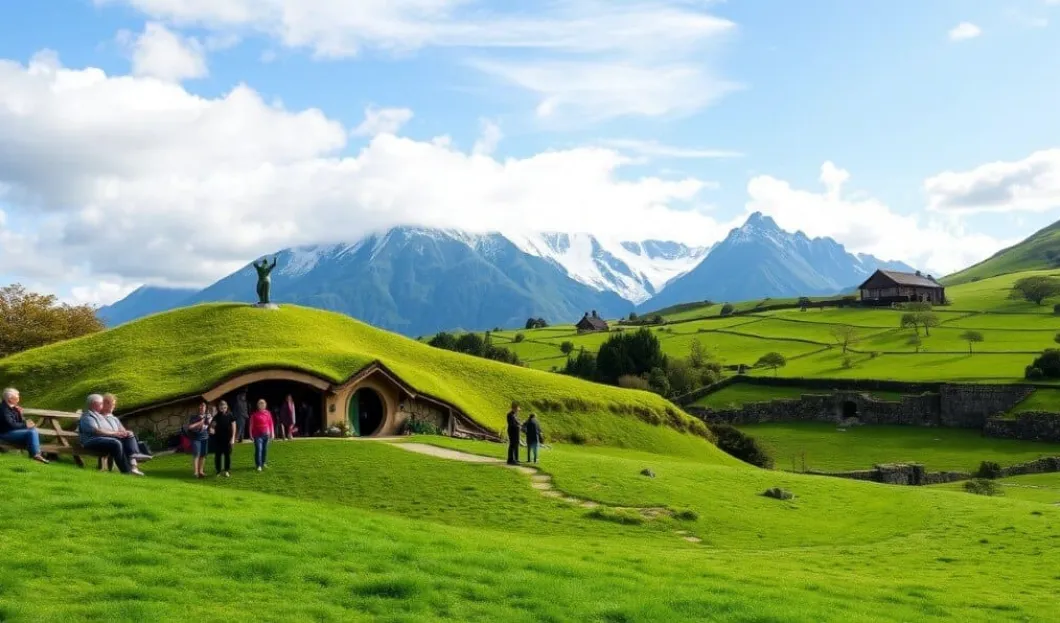
Film tourism has become increasingly popular, with many viewers inspired to travel to the locations where their favorite films or series were shot. This trend has grown significantly in recent decades, with estimates indicating that over 80 million tourists traveled for this reason in 2018, confirming film tourism as an expanding segment.
Beyond its economic impact, the audiovisual industry also reshapes the perception of destinations and changes how visitors experience them. In some instances, the influx of tourists has boosted local economies and revitalized certain areas. However, this surge can also lead to overcrowding, gentrification, and a dilution of local identity. Visitors may consume superficially, focusing on iconic scenes without understanding the local history or culture.
These competing factors contribute to an essential debate for many cities striving to balance the advantages of tourism with the need for sustainability.
Loyal Tourists Spread across Time
Film tourism is a significant driving force for a local economy but can sometimes lead to adverse situations. When managed effectively, the sector serves as both an attraction and a way to promote year-round travel.
Viewers often become interested in the locations featured onscreen and seek to experience them in real life. This desire to compare the portrayed image with reality allows film and television to significantly influence travel decisions and act as powerful territorial marketing tools.
Another advantage of film tourism is its ability to allocate tourist flow more evenly throughout the year. This increased activity during off-peak periods has several beneficial effects. It rejuvenates local areas while maintaining interest in the destination, leading to sustained economic growth with reduced social, cultural, and environmental impact.
Moreover, tourism tied to films tends to foster a greater sense of loyalty to the destination. Visitors develop a connection that often motivates them to return. Many travelers even share their experiences on social media or recommend these locations to others.
Authenticity is crucial in this process since it allows tourists to feel genuine emotions and creates a captivating experience. This emotional connection is essential for generating motivation to visit a place and cultivating loyalty.
These insights come from research conducted by the multidisciplinary team at the Center for Analysis and Prospective of Tourism (CAPT) at the University of Córdoba. Their studies examine the sociodemographic profiles of film tourists and their primary interests and motivations.

Dubrovnik before and after 'Game of Thrones'
Film and television can change how people perceive a destination, transforming everyday spaces into iconic locations. For instance, Dubrovnik saw a significant increase in tourism after it became known as King's Landing, the capital of the Seven Kingdoms in *Game of Thrones*.
What was once a niche destination in Croatia has welcomed 40% more tourists in just a few years, creating both economic opportunities and logistical challenges for the city.
However, tourist overcrowding can also lead to conflicts with residents and alter the very essence of a destination. Barcelona, which has served as the backdrop for films like Vicky Cristina Barcelona and El Perfume, is currently grappling with issues of gentrification and rising prices for homes and shops. This situation has sparked protests against uncontrolled tourism.
Who Is the Film Tourist?
To better understand the impact of film tourism, the "Tourism Economics" Research Group at the University of Cordoba has analyzed the profiles of these travelers. Studies show that most film tourists are young adult travelers, between 18 and 35 years old, with a high education level and a medium to high income. Their main travel motivations include entertainment, a desire to escape their daily routines, and cultural interest.
This profile indicates that film tourism can attract tourists with higher spending power. However, it also presents challenges: how can we ensure that these visitors engage with the local culture in ways that go beyond merely visiting the sets of their favorite movies?
The Impact of Film Tourism on Identity and Urban Transformation
One of the least studied effects of film tourism is its impact on destinations' cultural identity and urban structure.
When a location becomes strongly associated with a film or television production, it can alter how visitors and residents perceive the space.
A clear example of this is Notting Hill in London. Following the release of the famous movie bearing its name, the district experienced demographic changes and a rise in housing costs, which led to the displacement of some of its original communities. This phenomenon, known as film-induced gentrification, has sparked debate in many cities that have served as the backdrop for successful productions.
Similarly, some destinations have chosen to adapt their urban planning to meet the demands of film tourism. In New Zealand, the set of "The Lord of the Rings" has become a permanent attraction, complete with infrastructure designed to accommodate visitors in a controlled manner. Such initiatives allow destinations to capitalize on film tourism while maintaining livability.
Where Is Film Tourism Heading?
The great challenge today is to transform film tourism into a sustainable model. Some successful strategies include:
- Managing tourist flows: Dubrovnik has limited the number of daily visitors, while Amsterdam has initiated campaigns to redirect tourists to less crowded areas.
- Regulation of filming and tourism promotion: Some cities now require production companies to fund environmental conservation for filming locations.
- Local community involvement: Support initiatives that enable residents to benefit from film tourism while protecting local businesses.
Film and TV will continue to inspire travel; however, it is crucial to manage their impact to ensure that the benefits do not come at the expense of the destinations' identity and well-being. By implementing the right strategies, film tourism can be a powerful tool for cultural and economic development while preserving the sustainability of the places that enable it.










